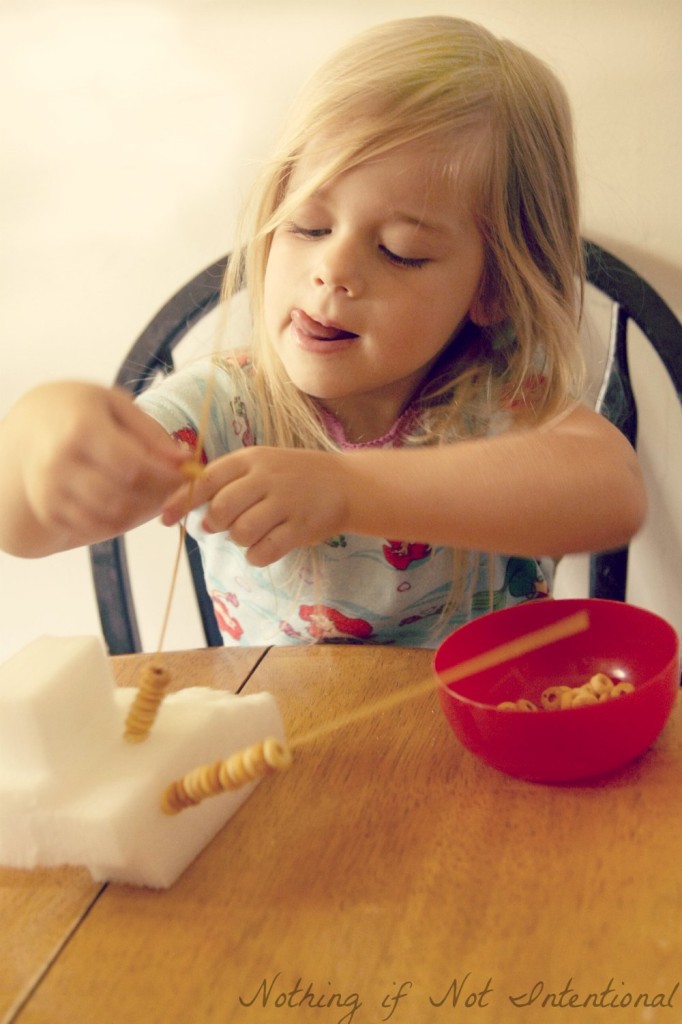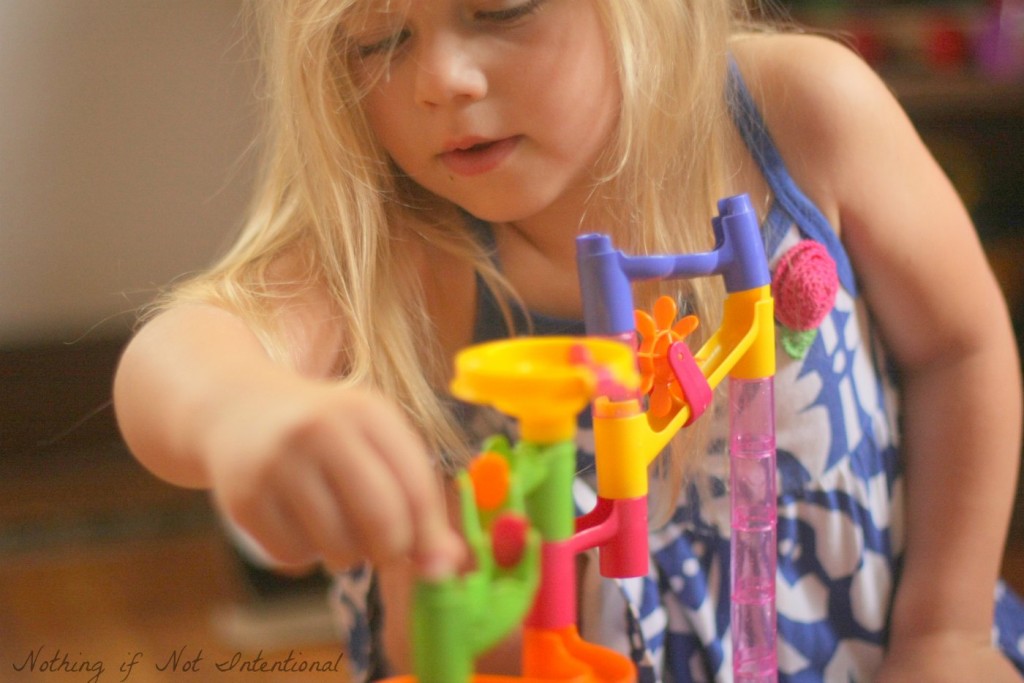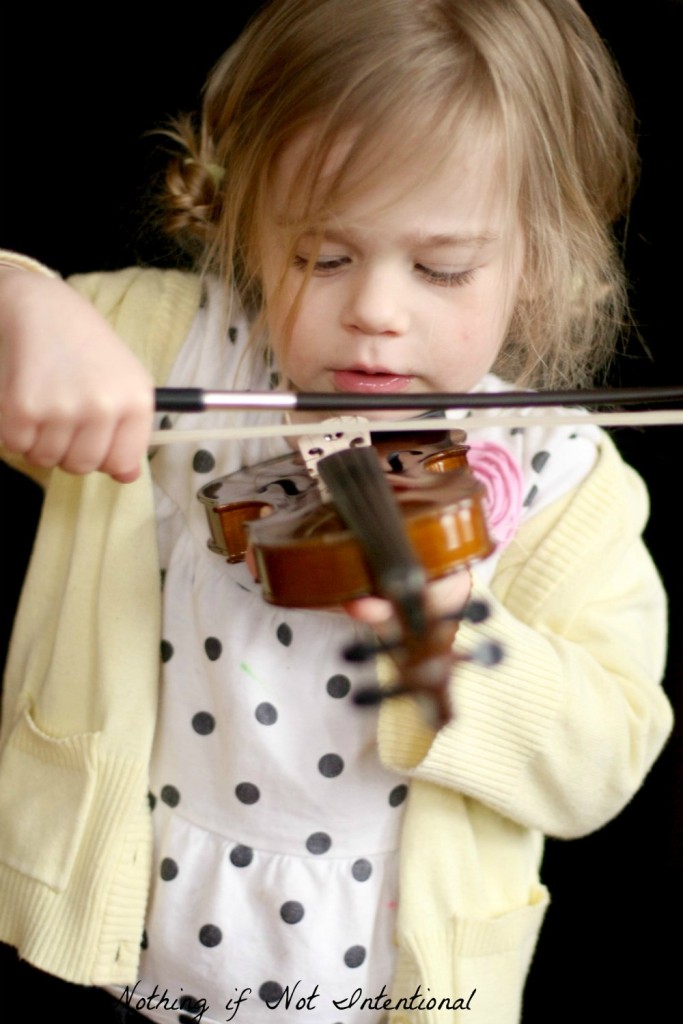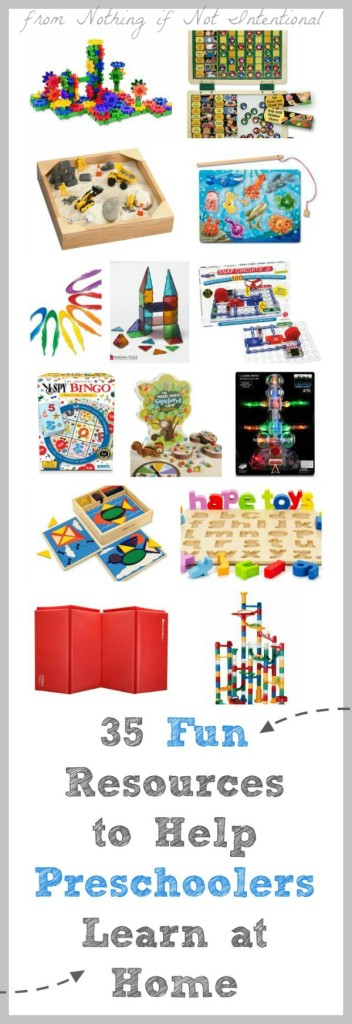Homeschool Preschool Plan
In my last post, I told you about five approaches to home preschool and how I lean towards a combination of unschooling, unit studies, and Charlotte Mason.
As I was wrapping my mind around the upcoming preschool year, I made a list of areas that I think are important for me to include and explore with my preschooler.
My list includes such things as:
- Music
- Art
- Pre-Reading (such as alphabet identification, letter sounds, etc)
- STEM (science, technology, engineering, math)
- Sensory Exploration
- Fine Motor Skills
- Gross Motor Skills
- Life Skills
- World Awareness (service, culture, history, diversity)
- Spiritual Development
- Emotional Intelligence
- Social skills
- Pretend Play
- Free play
Home Preschool Resources
That’s a pretty big, ambitious list! So what does that look like in reality? Well, you can find my collection of play-based preschool ideas on my “preschool play” board.
I also searched our shelves, scoured amazon, and browsed pinterest to find resources that I think we’ll utilize this year. Again, you can read my “Approaches to Home Preschool” post to see why I feel like you don’t NEED much to teach your preschooler at home. This post includes lots of suggestions and ideas; please use what works for you and disregard the rest! Instead of letting this list overwhelm you, use it to spark your own great ideas and find your own path!
To see how we’re working these things into our routine and schedule, check out our “Finding a Home Preschool Routine that Works for You” post!
Here are my broad categories and corresponding resources:
Science, Technology, Engineering, and Math (STEM)
- MathStart 1 books. I recently read a few reviews that made me think these books would be a fun way to weave math into our story time. I will check at the library first, but Monster Musical Chairs, Mighty Maddie, and Leaping Lizards are on my amazon wishlist.
- Snap cubes
- Puzzles (My girls are loving this fishing puzzle and often return to this beginning pattern block set.)
- Coding for kindergarteners. This kind of blows my mind. This site has tips for helping pre-readers learn some basic coding concepts. My IT-guy husband thinks this is awesome.
- Laser Pegs like this “Bug” set. The manufacturer’s recommended age is 5-15, but since the LED lights will last for 11 years, I may buy a set for Christmas and let my oldest start tinkering. 🙂
- Snap circuits–we got the Snap Circuits Jr set for our three-year-old last year for Christmas, and it’s been awesome. It’s rated for kids ages 8 and up, but our daughter has been working with Daddy to put together circuits that lead to music, light bulbs, and fans. Daddy helped a lot in the beginning, but now she can put a few together by herself–with and without him reading the instructions. They haven’t attempted some of the more advanced challenges, so this is definitely a “toy” that will grow with us for a few years.
- The My First Mind-Blowing Science Kit looks like a good starter set for science experiments, but I know you can piece together the materials and find plenty of great science experiments online.
- Beakers, droppers, magnifying glass, magnets, and tongs
- Outdoor play--nature exploration, scavenger hunts, water wall, and mud pies in the outdoor kitchen.
- Building materials such as train tracks, marble runs, blocks, magna tiles, and gears.
- A weather chart like this one from Fun-A-Day.
- Science experiments for young kids collected in my “Experiments and Measurements” (STEM) board.
Literacy (Pre-reading and pre-writing skills)
- I Spy Bingo. This is a fun literary game that emphasizes letter sounds.
- Sneaky Snacky Squirrel Game. This is our favorite preschool game. It’s a fun way to work those little finger muscles and improve fine motor skills!
- Alphabet puzzles (like this lower-case option) are great for letter identification and learning letter sounds.
- Read alouds. We love picture books, but now we’re also starting to explore chapter books. We just finished The Lion, The Witch, and The Wardrobe. Reading it out loud to a not-quite four-year-old meant it came with a MILLION questions and interruptions. But through her questions, she absorbed a ton of detail. (Should you ask her how they made Turkish Delight, she’ll probably say something like this: “The Queen put a drop in the snow and it sizzled and turned into a cup. And then she put in another drop in the snow and it sizzled and turned into Turkish Delight and it was really, really sugary and Edmund ate the whole box. It was a lot.”) Once I got over the fact that progress would be slow, I loved this time with her. Now we’re about halfway through Charlotte’s Web. We’ve head that The Magic Treehouse series is a good place to start as well!
- Handwriting Without Tears Pre-K Activity Book. It’s a workbook (I didn’t get the teacher’s manual), which is the opposite of unschooling. However, teaching my daughter to write makes me nervous; therefore, I’m willing to explore this workbook option a bit. I think it will be nice to have on the mornings when my daughter asks for “school,” but we don’t have time for big activity.
- Tongs, playdoh, tools, scissors
The Arts & Social Science
- Playing with the real instruments in our home–violin, cello, trumpet, piano, and a beginner’s electric guitar
- Singing and dancing at home (we sing a lot at our house!)
- Music or dance classes
- Gross motor skill development in the form of bike rides (with a little coaching and one key piece of equipment, our daughter learned to ride without training wheels in about ten minutes), jumping on the trampoline, playing at the play ground, and gymnastics on a tumbling mat.
- Visits to the symphony, choir and band concerts, and musical theater
- Holiday and seasonal activities as we feel interested
- Pretend play. This includes 24-7 access to a well-stocked dress-up tote, toys like our mail set, an upcycled grocery store, and more baby dolls, animals, and imaginary friends (the latest in our collection is an eyeball named Aho) than I can count. We also just purchased this mini sandbox for some creative, indoor fun this winter.
- Process art with materials like dot markers, glue, sticky paper collages, paint, glitter, puffy paint (check out this easy puffy paint recipe), cotton balls, feathers, and buttons.
- We put the Jesus Storybook Bible on our kitchen table, and we started reading it at meal times. The girls asked for it so often that we read through it in just a few weeks. We’ll probably pick it up and start over again soon.
- Responsibility Chart. We have one from Melissa and Doug on hand, but we’ve yet to put it to use.
- Baking/cooking (you can see our Cooking with Kids” category HERE and find even more ideas on our “Food for Kids” board.)
- Serving as a family (through babysitting for friends, taking meals for new moms, working in the church nursery, etc)
- Travel. We truly believe travel is one of the best forms of education. You can read our personal travel stories HERE and see the best tips we’ve gathered online on our travel with kids board.
One final resource: I share a pinterest board with several bloggers who all have young kids and believe strongly in play-based learning. It’s called Creative Kids’ Activities, and we’d love for you to follow along!
You can see our proposed homeschool preschool schedule/routine here!





1 thought on “35 tools, books, resources, and ideas to support your homeschool preschool!”